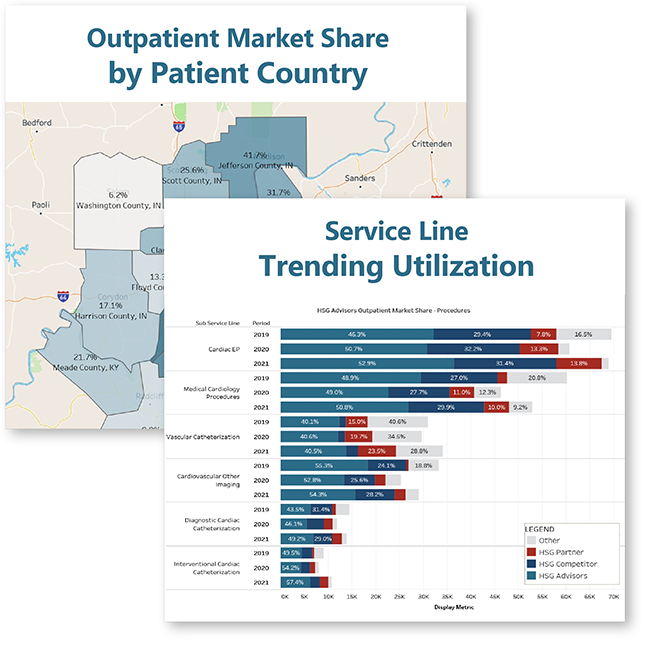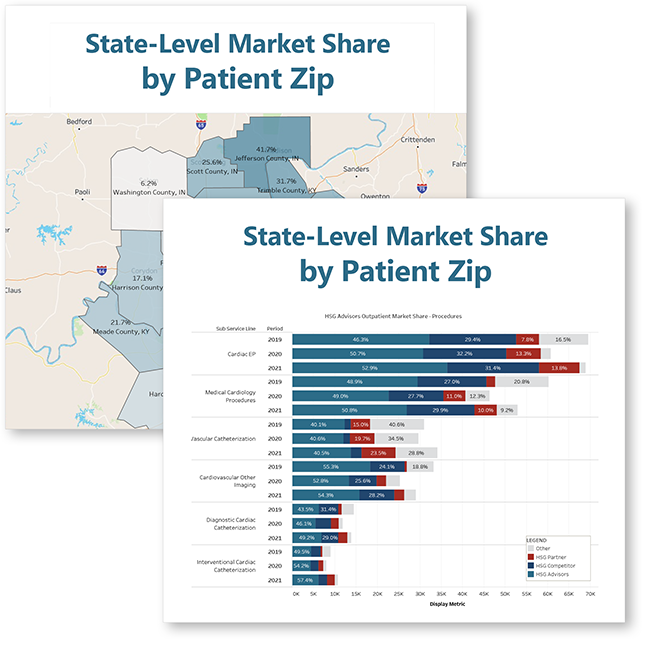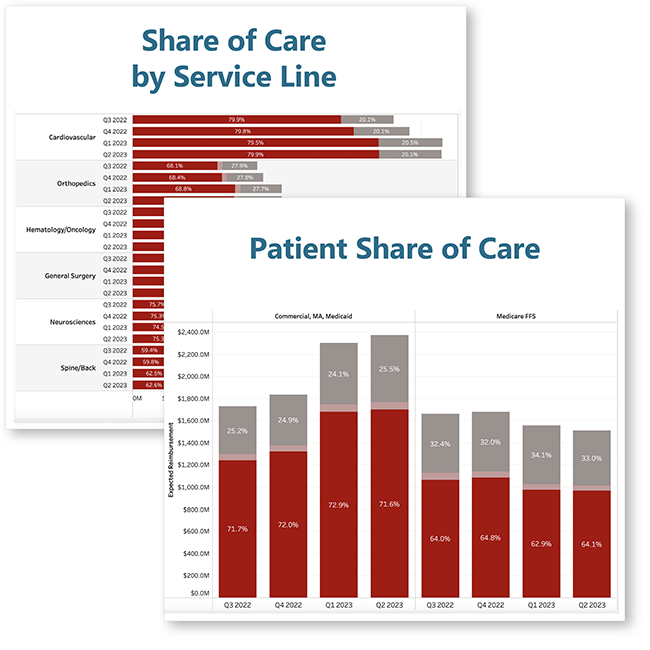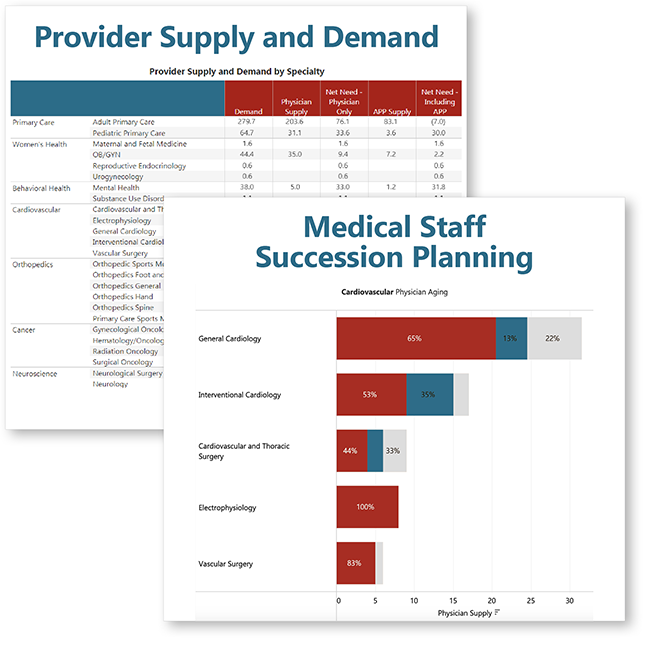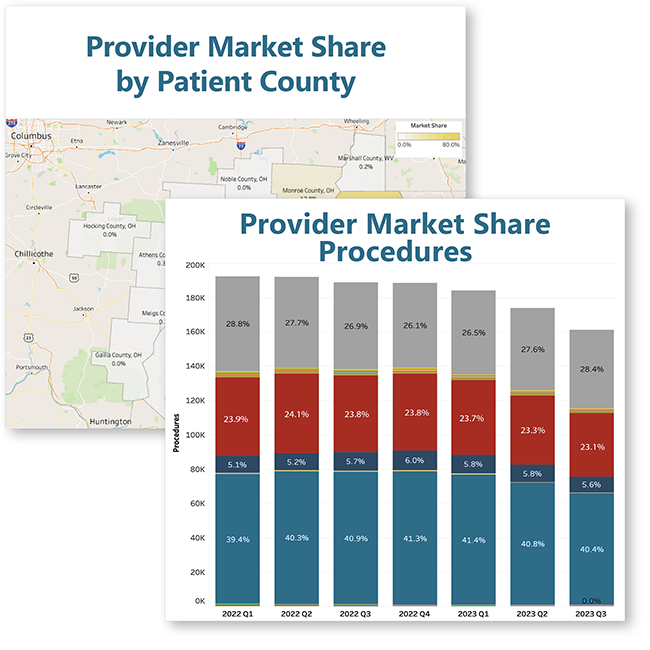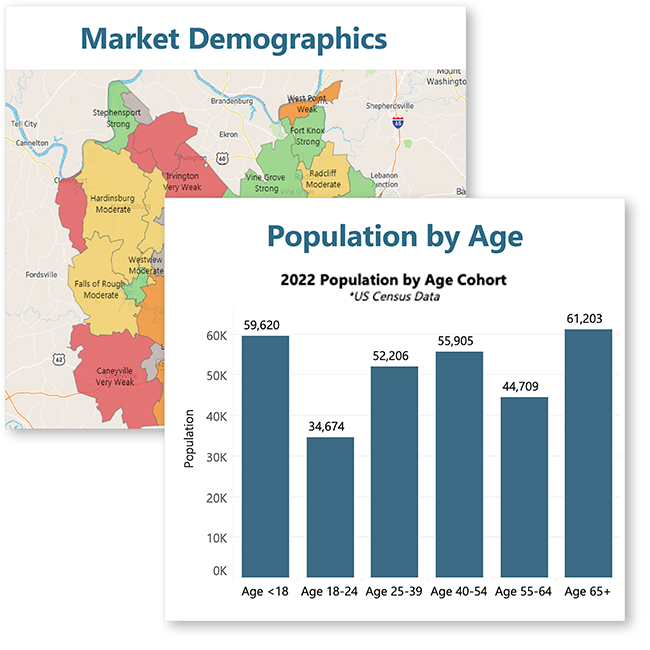Build Patient Attraction and Retention Growth Strategies
Overview
Identify and prioritize opportunities to address network leakage by tracking patient utilization of the care continuum after an interaction with a potential referring provider. This methodology measures success of a health system’s strategic planning initiatives and market-specific growth over time.
Measuring Patient Flow
HSG measures Patient Flow through a separate and distinct 3-step process that begins with the identification of source providers and the associated patient population. Patient populations are customizable to answer the specific business question presented.
STEP 1: IDENTIFY SOURCE PROVIDER PATIENT POPULATION
PATIENT POPULATION
Define source provider(s) and associated patient populations for evaluation.
STEP 2: DEFINE PATIENT FLOW WINDOWS
Track all patient interactions PRE and POST source provider services for custom care windows (30, 60, 90 Days).
STEP 3: MEASURE PATIENT FLOW
Measure percent of service volume to aligned providers versus competitor providers and/or facilities.
Customizable to Your Health System’s Needs in HSG Dashboard
Workbook Features
Bring your data to life through different reporting lenses in HSG Dashboard. 90-Day Patient Flow will be measured from CLIENT employed, competitor employed, or local independent primary care providers in CLIENT’s service area to all specialty providers (associated with CLIENT or not) as sampled during our scoping call.
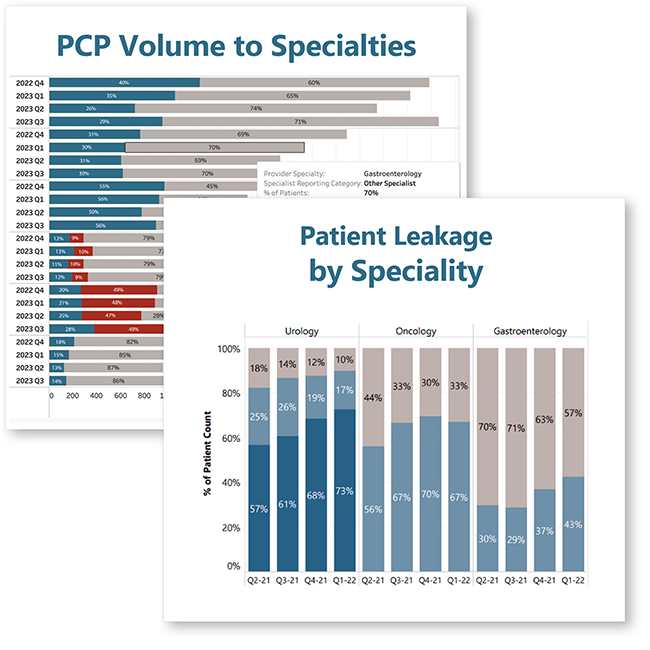
- 90-Day Patient Flow to Specialty Providers, including but not limited to:
- Primary Care to Specialist Overall (Medical and Surgical Specialties)
- Primary Care to Specialist by Primary Care Practice
- Primary Care to Specialist by Individual Primary Care Provider to Top 10 Specialty Care Providers
CUSTOMIZABLE TO YOUR HEALTH SYSTEM’S NEEDS
HSG Dashboard Workbooks
Related Resources
-
Developing Provider “Scorecards” for Patient Leakage Measurement
Webinar discusses the importance of developing provider scorecards using claims-based data to measure patient leakage

